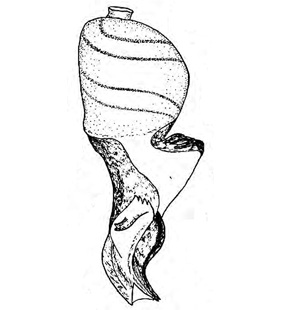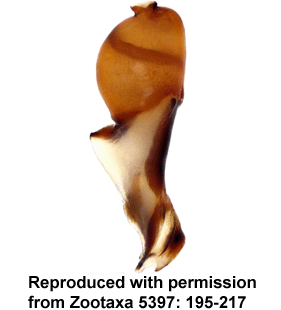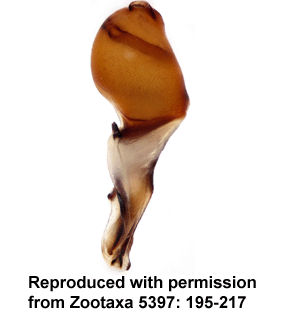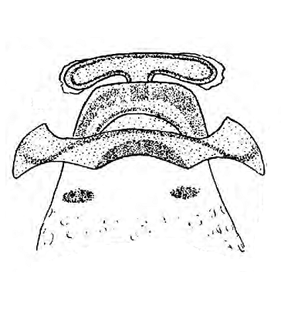Dysdera daghestanica Dunin, 1991
Description
Male
Prosoma length 4.3 mm, width 3.4 mm. Prosoma and chelicerae brown, shagreen with small spots. Sternum, labium and gnathocoxae orange-brown with small spots. Leg spination: Femur IV with 1.2 dorso-basal spines; tibia III with 1.2 ventral, 2.1 anterior and 1.1 posterior spines; tibia IV with 2.2 ventral spines. Opisthosoma gray-white.
Leg spination and median apophysis of the pedipalpus are typical.
Body length male: 10.3 mmFemale
Appearance similar to the male. Prosoma length 4.10-4.65 mm, width 3.55-3.95 mm. Leg spination more variable than in the male: Femur IV with 2-4 dorso-basal spines; tibia III with 1.2 ventral, 2.2 or 1.2 anterior and 1.1 posterior spines, tibia IV with 2.2.2 or 2.2 ventral, 2.1 or 1.2 or 1.1 anterior and 1.1 posterior spines.
Endogyne is not characteristic.
Additional information
Above 1000 m asl in oak-hornbeam forests near the forest edge under rocks.
Distribution
Phenology
| Jan | Feb | Mar | Apr | May | Jun | Jul | Aug | Sep | Oct | Nov | Dec |
 |  |
Figures
Distribution List
"No references" does not mean that the species does not occur in this country, but that we have not yet inserted the reference for it. We are working on it.
References
Dunin P M (1991a) New spider species of the genus Dysdera from the Caucasus (Aranei, Haplogynae, Dysderidae). Zoologicheskiĭ Zhurnal 70(8): 90-98 ![]()
Dunin P M (1992b) The spider family Dysderidae of the Caucasian fauna (Arachnida Aranei Haplogynae). Arthropoda Selecta 1(3): 35-76 ![]()
Otto S (2022) Caucasian spiders. A faunistic database on the spiders of the Caucasus Ecoregion. Database version 02.2022. Internet: caucasus-spiders.info.
Ponomarev A V (2022) Spiders (Arachnida: Araneae) of the southeast of the Russian Plain: catalogue, the fauna specific features. SSC RAS Publishers, Rostov-on-Don, 640 pp. ![]()
WSC (2025) World Spider Catalog. Version 26. Natural History Museum Bern, online at http://wsc.nmbe.ch (28.2.2025) doi: 10.24436/2 ![]()
Zamani A, Marusik Y M (2024) New data on Dysdera Latreille, 1804 and Harpactea Bristowe, 1939 (Araneae: Dysderidae) of the Caucasus, with new species and records. Zootaxa 5397: 195-217 ![]()








